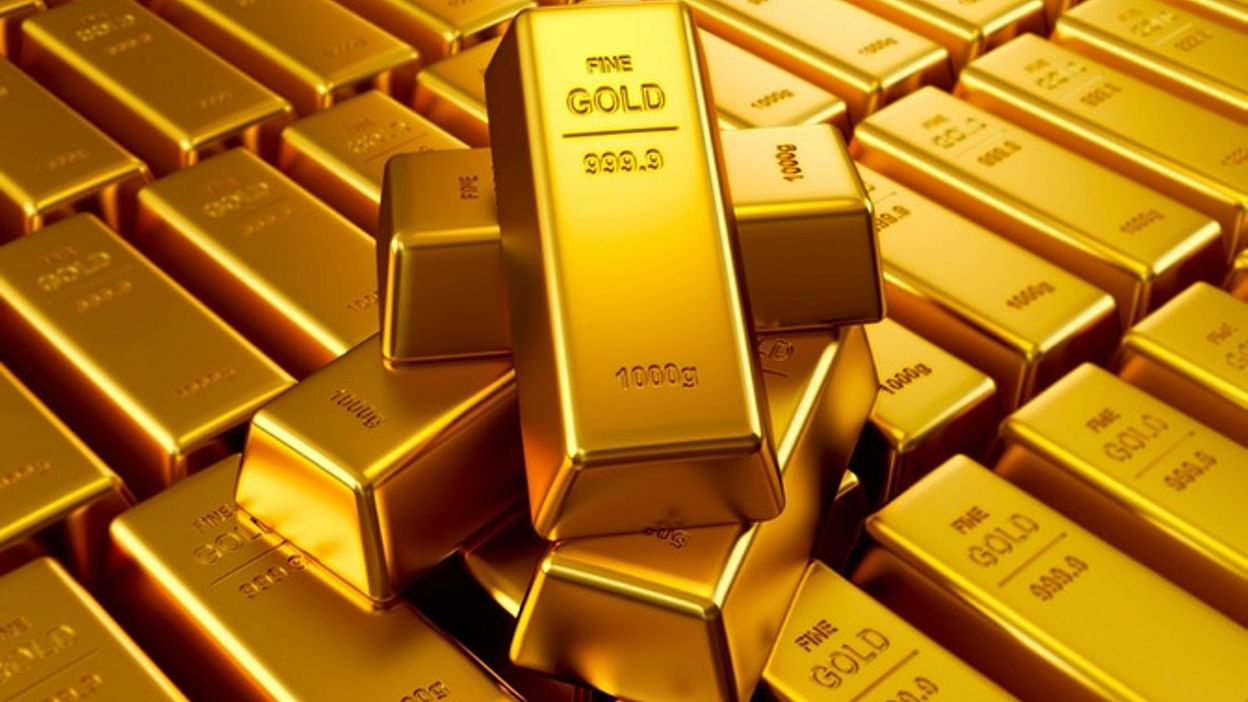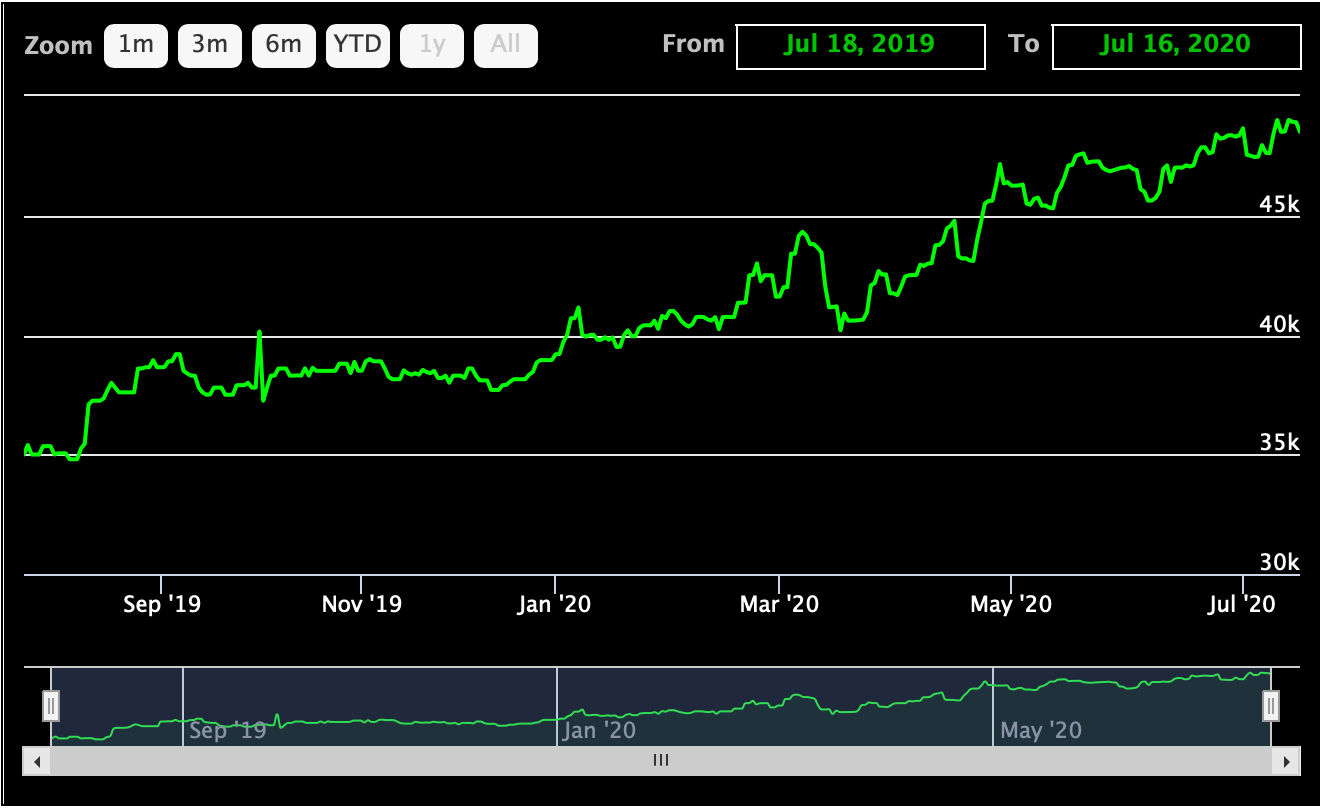What's going on with Gold?
Gold prices have been on a tear. Let's try to make sense of why that's happening...

Table of Contents
Gold, for Indian societies, has been much more than an investment. It's an ornament and status symbol, a family heirloom passed on over generations, an auspicious commodity used in religious ceremonies, and a popular commodity for gifting. Gold is so engrained in our minds, that people from all strata of society recognise its sustained value.
To make an investment thesis for gold is much harder than to make one for a business. A business generates profits, and that is a logical way of pricing a business. Gold however, is an enigma. It's one of the most brilliant commodities in all of creation. It has some unique characteristics like extreme durability and the right amount of scarcity (not so easily available, but still obtainable). But, why it's valuable (linking a brilliant article by Nick Magiulli on this) is still mostly down to belief that - it tends to stay valuable.
Gold as an investment, has to be analysed unconventionally. My key theme here is Gold's relationship with the US Dollar. Let's analyse it in the following format -
- Story of how the Dollar replaced Gold as the global currency
- Why have gold prices been rising
- How to invest
Story of how the Dollar replaced Gold
What is Money?
Money is something that's easily exchangeable, the value of which sustains over time.
This definition applies to everything that's been used as money since the barter system. From the first coins made of stones and metals (including gold), to paper money and its digital representations used now.
But, one fundamental shift happened during the transition from coins to paper money. While coins were valuable and exchangeable by themselves, paper money (though exchangeable) is considered valuable only because people trust it. Their trust in a piece of paper depicts the trust they have in its issuer. Usually, the ruler of a kingdom or a central bank.

This separation of - "the thing being exchanged as money" and "the thing which is valuable" happened around the world. From a system where (usually) gold was exchanged in a transaction, paper currencies took over. And every country started to issue its own currency.
With numerous currencies, a common system had to be established to measure the value of one against another. Naturally, gold was selected as the yardstick. It stayed this way for a long time.
During World War II, by providing war supplies to its allies, the US accumulated around 70% of the world's gold reserves. Since transacting in gold was becoming increasingly difficult, in 1944, the Allies agreed to start transacting in dollars. Initially, the dollar was linked to the price of gold and other currencies were linked to the dollar. But in 1971, the USD was decoupled from gold, and became by itself - the common yardstick for international transactions.
Now, central banks of countries around the world keep some dollars to enable foreign transactions. And the dollar effectively replaced gold as the currency of the world.
Why have gold prices been rising
A safe haven is a place of refuge or security. Gold has been considered a safe haven asset since time immemorial. A place for investors to hide during economic turmoil. The rush towards a safe haven asset during such times, increases the demand of such an asset and in turn its price.
Though there are many-many factors that affect the price of Gold, the most important one, in my opinion, is the health of the US Dollar. The US Dollar in turn depends on - the health of US' economy (slowing), and global confidence in US Dollar's supremacy (slowly shifting).
US supremacy as a global superpower is being questioned today, more than it has in the last 50 odd years. China wants more influence, so do Europe, Russia and India. The world is becoming more assertive and nationalistic. This shift has made global leaders question the privilegde enjoyed by the US Dollar, a source of immense strength for the US.
Considering the above, I don't see the USD retaining its status as the only reserve currency of the world for even ten years. Whenever this move happens, it would give an enormous boost to gold prices. Many countries are already betting on the same, by accumulating gold in large quantities. And this heightened demand for gold is one of the major factors behind its recent rally.

Another huge reason for my preference for gold at this time is - the world has accumulated an insane amount of debt. Global debt is now at a record 3.31 times global GDP. This would further increase due to the spending being done by governments to finance the recovery from the pandemic.
Imagine you run a business in which your sales revenue for the year is ₹100, at best you would make 20% profit. If you owe ₹331 to a bank. Your profit makes it hard enough for you to pay the interest. Paying back the loan is nearly unthinkable.
Hence, I don't see how debt laden governments of countries with poor economic prospects can pay back their debts. Which would inevitably devalue their currencies. Meaning that - if for 100 units of currency they could buy 10 bananas, after devaluation they can probably buy just 3 bananas.
This would make them lose faith in their country's monetary system, and a change would need to be made. I doubt if these countries would embrace the dollar. Plus, influential global voices would not allow that to happen. So would this bring them back to gold (maybe a digital equivalent of it)? I think it's likely.
How to invest
There are three ways to invest in Gold - Physical Gold, Gold ETFs, Sovereign Gold Bonds.
Physical Gold
- Advantages - It's the real thing. You're not dependant on anyone else. Plus it has ornamental value.
- Risks - Theft, concerns around purity, storage cost, resale value of jewellery.
Gold ETFs
- Advantages - Low risk of theft. High purity assured. Tradable on the stock exchange.
- Disadvantages - Lower level of safety than Sovereign Gold Bonds. Lesser return than sovereign gold bonds.
Sovereign Gold Bonds (SGBs)
This in my opinion, is the best way to invest into Gold. Here are some of it's features
- An individual can buy a maximum of 4 kgs worth of SGBs. At todays price that should be around ₹ 1.94 Crores.
- The investor receives an interest of 2.5% per annum, payable semi-annually. This interest is paid on the amount invested.
- Since it's a "sovereign" bond, it's issued by the government of India, and has the highest standard of safety.
- One can redeem the bond after 5 years, but can easily sell on the stock exchange at prevailing prices.
In my opinion, having 10-15% of one's portfolio in gold is a good decision in today's scenario. I too hold that percentage.
For safe measure I'm linking my disclaimer here.🙌🏼
Stebi Newsletter
Join the newsletter to receive the latest updates in your inbox.

